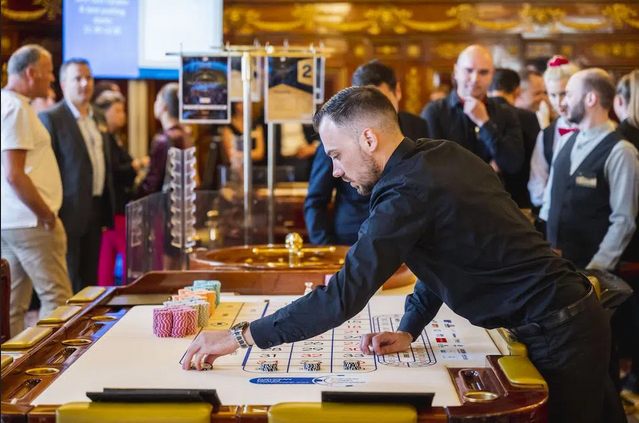When Does the Dealer Stop Hitting in Blackjack?
Blackjack has long been considered the simplest game in the casino. Player play against the dealer, who only deals the cards face down until he reaches 21 or busts. But the dealer also wins at times, thanks to his ability to count cards. The information allows the dealer to make educated guesses about the value of the upcoming hand. The dealer knows whether the next card will beat a previous card or not. When playing Blackjack, the dealer can hit as many times as he wants and is allowed to keep every winning combination. The player can do the same and must always stand on 19. The dealer’s maximum bet in most casinos is $5 per round. If the dealer busts, all players are paid even money for their cards. Even though it might seem that the dealer could win in the end, he always ends up losing because he has to pay all losing hands.
So, when does the dealer stop hitting in blackjack? Let’s find out.
When Does the Dealer Stop Hitting in Blackjack?
The rule about when the dealer stops hitting is pretty straightforward: if the dealer and player have an equal amount of cards, then the dealer must stand on every round. The dealer stands because it’s his turn to receive a new hand. The Player can’t know for sure that he won’t take another hit unless another player asks. That means that as long as the dealer and player both hold more cards than the dealer has already dealt himself, then the dealer stands.
If there are no more cards left to deal from either side, then the game ends immediately. But what happens if the dealer still holds cards after everyone else has played their hands?
To decide when the dealer should stop hitting, we need to look at how many cards the dealer has dealt. A typical casino table shows three decks with 52 cards in each pack. If the dealer has dealt himself 11 or 12 cards, then he has 2 or 3 cards remaining.
At this point, the dealer can choose to stand or continue to hit. If the dealer chooses to stand, then the hand is over, and he’ll lose every time. If the dealer decides to hit, he continues to draw and discard cards. At the conclusion of the round, the dealer looks again at the number of cards he has dealt himself.
If he now holds 14 or 15 cards, then he has two cards left in his hand. Again, he must stand or continue to hit based on whether he thinks the next card will be better than the last card.
After the dealer stands, the player must stand if they have less than 17 cards. If the player has 17 cards or more, they may elect to stay or surrender. When the dealer reaches 17, the player must surrender the rest of their cards, which leaves the dealer holding exactly what he started with. At any time during the hand, the dealer can determine that he needs to quit playing. If the dealer quits before anyone else, then the player who lost the most hands wins the pot. If nobody has yet busted, then the dealer gets extra money for each hand he wins.
Conclusion
The dealer stops hitting when he has enough cards to ensure that he loses every hand. This means that the dealer cannot win the hand until all the other players have finished. It also means that the dealer will lose the hand if he draws too many cards from the deck. This means that if the dealer holds 7-11 cards, he must stand. If he holds 12 or 13 cards, then he must continue to hit. Finally, if he has only 14 or 15 cards remaining, he must stand or hit again.
